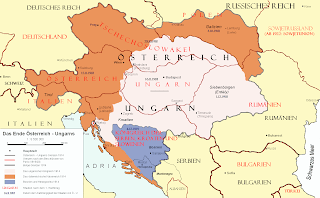 That's why I was happy to find this document from Google Books - which comes from 1890 - a time when the Mangalitsa was the typical pig breed in the Kingdom of Hungary (which was a lot bigger than Hungary today).
That's why I was happy to find this document from Google Books - which comes from 1890 - a time when the Mangalitsa was the typical pig breed in the Kingdom of Hungary (which was a lot bigger than Hungary today).The hog business has completely changed since 1890: back then, hogs were produced mainly for their fat, which was a valuable commodity (not a waste product). Plant oils (margarine) and synthetics (WD40, grease) hadn't displaced lard. Synthetic fertilisers didn't even exist - so pig manure was important enough that people built railroads to haul it away:
Although the document includes some neat stuff about pig breeds (including the Mangalitsa), there's too many tables of figures, and no photos. But at the very end there's stuff that sounds quite funny now (and makes me wonder how it sounded back then):
The gravies obtained from the melted bacon are a favorite article of food with the lower classes, while the refuse so obtained is used in the manufacture of soap.Anyway, getting serious, this report reminded me of one thing: today's Mangalitsa is essentially the same lard-type pig that it was a long time ago - while other "heritage breeds"(for better or worse) aren't.
If we could resurrect Vice-consul Louis Gerster and show him our farm, he'd recognize our swallow-bellied Mangalitsa pigs. But our Berkshires would throw him for a loop, due them being so much leaner than they were in 1890.
That's something I find very interesting about the "heritage breeds disappearing" issue: one way that breeds disappear - other than just dying out - is via transformation into something completely different. Of course, when a breed (like the Berkshire) goes through so many changes in response to changing consumer tastes, saying you want to preserve the breed requires saying which version you want to save.
At this point, it is important to emphasize that although Wooly Pigs thinks breed preservation is generally a good thing (in case we need the genes in the future), we exist to produce pork that tastes particularly good. So although we really like the Mangalitsa, we are only raising them because they taste fantastic.
If we mainly cared about breed preservation, we wouldn't be raising Mangalitsa; we'd be raising endangered breeds like the Guinea Hog that don't have an economic niche anymore.
Despite being rare (especially in the Americas), the Mangalitsa has a niche: it (along with some other breeds) is used to produce some of the best pork in the world. So as long as some continue to demand the best, it will continue to exist.


1 comment:
eating plenty of fat is all well and good when you're working your ass off all day doing manual labor. but when you're sitting on it in front of a computer for the better part of the day, your body needs much less to be healthy. I'm not for pigs that are so lean their nervous system is screwed up and their flesh is tasteless, but the modern berkshire gives much more useable product then the older one did for today's lifestyle, and the meat is very well marbled, especially compared to commodity hogs. as it is, you still end up with more fat then a small family can consume in a year from a 200 lb hog. I speak from personal experience.
Post a Comment